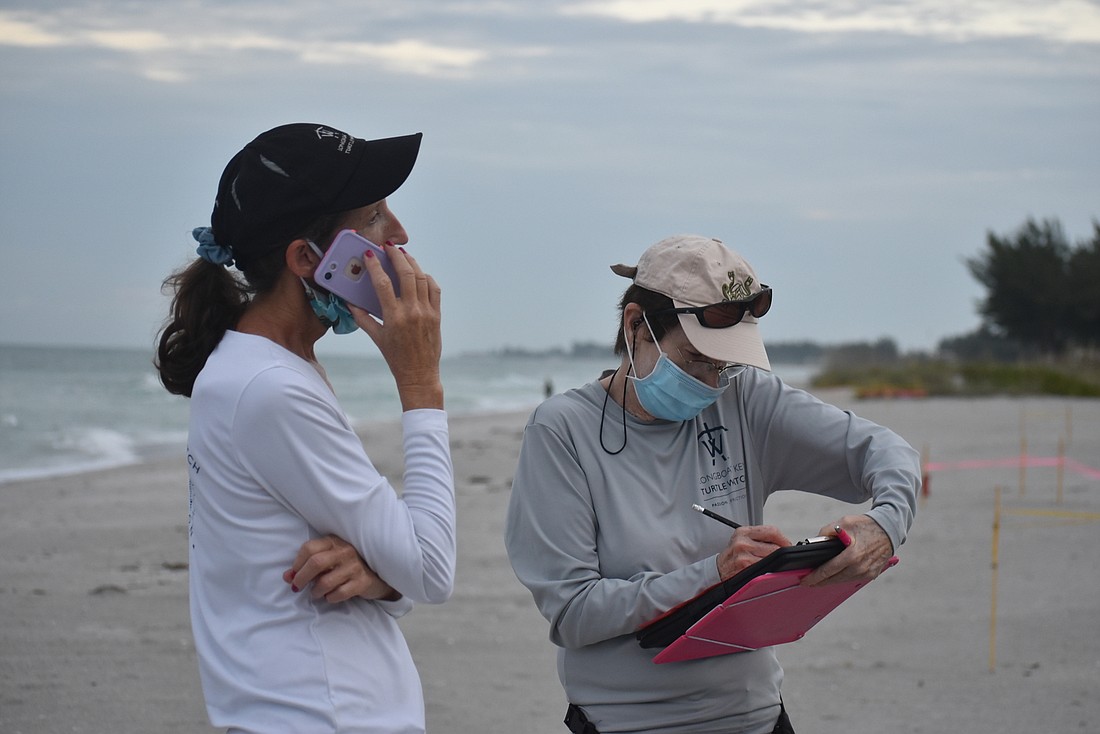- April 17, 2024
-
-
Loading

Loading

At least one part of the world had a pretty run-of-the-mill, and even kind of a “good” 2020. Sea turtles on and around Longboat Key enjoyed a good season, the fourth best since Mote Marine Laboratory and Aquarium began keeping records more than 30 years ago.
“The top five years have been the last five years, so we're still seeing the upward slope, even though this year was a little bit lower than last year's record,” Mote senior biologist and conservation manager Melissa Bernhard said.
These are different turtles than nested during last year’s record-breaking season, as turtles take one to three years off to restore their energy, Bernhard said. Loggerheads make up the bulk of the nesters, but there were more green turtles on the area’s shores this year than expected.
“We are at the point now where we see green turtles every year,” Bernhard said.
Even the active hurricane season in the Gulf didn’t make for a particularly suspenseful season. While there were six named hurricanes in the Gulf, none had a direct hit on Florida, so the storms impacted nesting less than they could have. Bernhard has seen two years where over a thousand nests were lost to storms, but expects that only about 200 will be lost to rough surf.
“It's just kind of a boring (season), turtles came, they nested, they hatched, some of them disoriented, and now they’re gone, which I'll take because when the season started, we were shut down (because of COVID-19)... so we weren't even really sure how we were going to start,” Bernhard said.
As for disorientations, 2020 saw a low percentage of disoriented nests on Longboat with 11%. That’s not the highest percentage across Mote’s reporting area, Bernhard said, but since Longboat has such a high number of nests, it adds up to the highest number of affected nests, about 130.
“It's still a high number … so even if it's getting better, it can always improve,” Bernhard said. “Ideally, we have none. But that's the perfect world.”
Still, it’s adding up to good news over the years, as code enforcement officer Chris Kopp noted that the percentage of disorientations has gone down every year since 2017, when it was 15%.
Kopp has wrapped up his first turtle season as Longboat Key’s code enforcement officer, learning the coastal ropes and patterns. He noted that in the beginning of the season, out-of-place beach furniture was the bigger problem. Later in the season, when tiny, brand-new hatchlings are scrabbling to the water, the artificial light becomes a bigger concern.
“We take both with concern, but we really want to make sure that those hundred hatchlings have a chance,” Kopp said.
While the rest of the world had a tumultuous 2020, turtles themselves weren’t affected by the pandemic.
They were, however, affected by humans who were having a bad year and dealing with it by taking to the water. There were more boat strikes on turtles by the end of August 2020 than there were in all of 2019, Kettle said, and there were 30 as of the end of turtle season. Unfortunately, that’s almost always a fatal blow.
“(The effect of COVID-19), it's less about the nesting, and more about the huge increase of activity on the water that puts turtles in harm's way more frequently,” Kettle said.